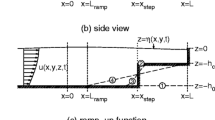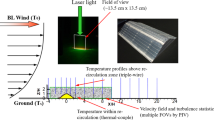Summary
¶Numerical simulations of the south foehn in the region of Innsbruck are presented. They are semi-idealized in the sense that realistic orography but idealized initial and boundary conditions are used. The focus of this study is on typical features of the fully developed foehn, the breakthrough phase of the foehn and the diurnal cycle of the foehn. In addition, the impact of the large-scale wind direction is examined, including conditions leading to shallow foehn.
The simulated flow fields have been found to be in very good agreement with observations except for a few minor details. In the lower part of the Sill Valley (the valley going from the Brenner pass down to Innsbruck), the wind speed is significantly higher than in the upper part. The acceleration can be traced back to the three-dimensional propagation of gravity waves excited over the adjacent mountain ridges. The amplitude of the gravity waves over the various mountain ridges depends sensitively on the wind direction, large wave amplitudes occurring only when the angle between the wind direction and the ridge line is not too small. For southwesterly or south–southwesterly large-scale flow, wave amplitudes are significantly larger to the east of Innsbruck than to the west. Foehn breakthrough at Innsbruck is usually preceded by a moderate westerly (downvalley) wind that is restricted to a rather small area around Innsbruck. The simulations reveal that this so-called pre-foehn is mainly a consequence of the gravity wave asymmetry, producing an asymmetric pressure perturbation with lower pressure to the east of Innsbruck. Shallow foehn, defined as a foehn occurring when the large-scale flow at crest height (700 hPa) is approximately westerly, is associated with relatively weak wave activity along the Sill Valley. It is found that at least a weak southerly wind component below crest height is necessary to maintain a significant shallow foehn over a longer time.
Similar content being viewed by others
Author information
Authors and Affiliations
Additional information
Received October 10, 2001; accepted June 20, 2002 Published online: February 20, 2003
Rights and permissions
About this article
Cite this article
Zängl, G. Deep and shallow south foehn in the region of Innsbruck: Typical features and semi-idelized numerical simulations. Meteorol Atmos Phys 83, 237–261 (2003). https://doi.org/10.1007/s00703-002-0565-7
Issue Date:
DOI: https://doi.org/10.1007/s00703-002-0565-7




